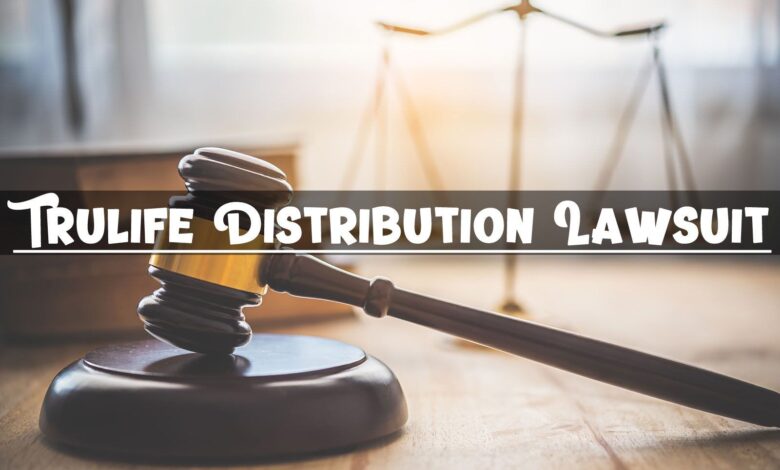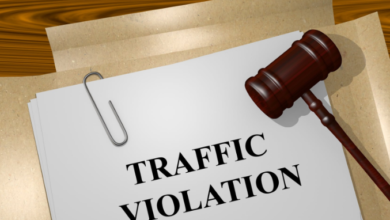Trulife Distribution Lawsuit: How the Case Could Affect the Industry

Introduction
The Trulife Distribution lawsuit has garnered significant attention in recent months, sparking conversations about corporate accountability, legal implications, and the future of business practices. As one of the most high-profile legal cases involving a major distribution company, this lawsuit has far-reaching consequences for both Trulife Distribution and the industry as a whole. But what is this lawsuit really about? What are the key issues at play, and how might it shape the landscape of business litigation in the future?
This article delves deep into the Trulife Distribution lawsuit, offering a comprehensive breakdown of the events, legalities, and impact of this case. From understanding the background of the lawsuit to analyzing the legal challenges and potential outcomes, we explore all angles of this significant legal battle. As we unfold the case, we’ll also address frequently asked questions to clarify key details surrounding the lawsuit, its stakeholders, and its potential consequences.
Background of the Trulife Distribution Lawsuit
The Rise of Trulife Distribution
Trulife Distribution has long been a recognized name in the distribution industry. Specializing in a wide range of consumer products, from household goods to healthcare supplies, the company built a reputation for reliability and efficiency. Over the years, it established a strong network of suppliers and customers, becoming one of the key players in its sector.
However, behind its success, there were growing concerns about certain business practices that would eventually lead to the lawsuit. These concerns ranged from allegations of unfair business practices, trademark violations, and failure to adhere to contractual agreements with suppliers. The combination of these issues led to multiple complaints and eventually resulted in the formal legal battle that would thrust the company into the spotlight.
Triggering Event: The Lawsuit
The lawsuit was officially filed when a group of former partners and suppliers accused Trulife Distribution of engaging in unethical business practices. The main allegation was that Trulife had violated contractual terms, causing significant financial losses for these partners. The lawsuit alleged that Trulife had failed to meet its obligations under a distribution agreement, leading to a breakdown in the working relationship and severe consequences for its business associates.
Additionally, intellectual property issues were central to the lawsuit. Some of the products distributed by Trulife allegedly infringed on trademarks owned by other companies, leading to further legal complications. As a result, this lawsuit quickly escalated, drawing attention from both the media and industry experts. The case’s outcome will undoubtedly have lasting implications for Trulife Distribution and its future in the industry.
Key Legal Issues in the Trulife Distribution Lawsuit
Contractual Violations and Breach of Agreement
One of the core issues at the heart of the Trulife Distribution lawsuit is the allegation of contractual violations. The plaintiffs argue that Trulife failed to uphold its end of various distribution agreements, causing significant harm to its partners and stakeholders. These agreements, which were meant to ensure smooth business transactions and product deliveries, were reportedly breached by Trulife’s failure to meet deadlines, provide quality products, and honor payment terms.
In many cases, the plaintiffs allege that Trulife’s breach of contract led to delays, financial strain, and reputational damage. Suppliers who had long-standing relationships with Trulife now claim that they were left without proper compensation for the goods they had supplied, and some are seeking restitution for the financial damages incurred. If the courts find that Trulife did indeed breach its contracts, the company could face hefty fines and be required to pay damages to the affected parties.
Intellectual Property Disputes
Another significant aspect of the Trulife lawsuit involves allegations of intellectual property violations. Specifically, certain products that Trulife distributed were found to have infringed on the trademarks and patents of other companies. These products were marketed and sold without proper permission or licensing agreements, leading to accusations of counterfeiting and trademark infringement.
The case highlights the complex nature of intellectual property law and how businesses must be vigilant in ensuring that their products do not violate the rights of others. With the growth of global distribution networks and the expansion of e-commerce, the risk of inadvertently infringing on intellectual property has become a major concern for companies. The Trulife Distribution lawsuit serves as a stark reminder of the importance of proper due diligence in product sourcing and licensing.
Regulatory Violations and Consumer Protection
Another layer of complexity in the lawsuit stems from allegations that Trulife violated consumer protection regulations. In some instances, the products distributed by Trulife were said to have been sold without proper safety certifications or failed to meet established industry standards. These violations, if proven true, could result in fines from regulatory bodies, as well as damage to the company’s reputation among consumers and industry regulators alike.
As the case unfolds, attention will likely turn to whether Trulife’s actions had any adverse effects on consumers. If Trulife failed to meet safety or quality standards, they could face additional scrutiny from government agencies, which could further complicate the legal proceedings.
The Legal Process and Court Proceedings
Timeline of Events
The legal process surrounding the Trulife Distribution lawsuit has been lengthy and complex. It began when the plaintiffs filed their initial complaint, outlining the various violations and requesting restitution. Over the course of several months, the case saw multiple motions filed, legal responses issued, and evidence presented. The complexity of the issues involved has resulted in a drawn-out court battle, with each side presenting extensive legal arguments and supporting documentation.
As of now, the case is still ongoing, with no definitive resolution in sight. The court has heard testimony from a range of expert witnesses, including business analysts, legal experts, and representatives from both Trulife and the plaintiffs. The legal team representing Trulife has focused on refuting the claims of breach of contract, arguing that the company upheld its obligations. However, the plaintiffs maintain that Trulife’s actions caused irreparable damage to their business interests, leading to the current legal standoff.
Major Court Rulings and Decisions
Several key rulings have shaped the direction of the Trulife Distribution lawsuit. One significant decision was the court’s denial of a motion to dismiss the case, which allowed the plaintiffs to proceed with their claims. Additionally, the court has allowed the inclusion of multiple claims related to trademark violations and intellectual property disputes, making it clear that these issues are central to the lawsuit.
In response, Trulife’s legal team has worked to challenge the validity of some of the claims, particularly those related to intellectual property and regulatory violations. As the case continues, further rulings will likely address key questions about the validity of the allegations and the potential consequences for the company.
Impact of the Trulife Distribution Lawsuit on the Industry
Consequences for Trulife Distribution
Regardless of the lawsuit’s outcome, the Trulife Distribution lawsuit will likely have a lasting impact on the company’s operations. Even if the company is able to settle the case or win in court, its reputation has been severely affected. Trulife may face financial repercussions due to potential damages, legal fees, and the cost of managing its public image in the wake of the lawsuit.
Furthermore, the lawsuit has sparked a conversation about corporate responsibility and accountability. Trulife’s business partners and customers may hesitate to continue doing business with the company, leading to a decline in sales and partnerships. This could significantly impact Trulife’s bottom line, forcing the company to reevaluate its business practices and potentially adopt stricter compliance measures in the future.
Broader Industry Impact
The Trulife Distribution lawsuit has sent ripples throughout the distribution industry, raising questions about the need for better oversight and regulation. Companies operating in this space may now face increased scrutiny regarding their business practices, intellectual property management, and adherence to consumer protection laws. The case could lead to stronger regulations within the industry, prompting businesses to reassess their operations and implement more transparent policies to avoid similar legal challenges.
The outcome of this case may also encourage other companies in the distribution sector to adopt stricter contract management practices, improve supplier relations, and enhance their legal compliance efforts. In the long term, the case could serve as a cautionary tale for businesses seeking to expand their operations without fully understanding the legal landscape.
Conclusion: trulife distribution lawsuit
The Trulife Distribution lawsuit is a pivotal case that highlights the complexities of business operations, legal accountability, and corporate responsibility. With allegations ranging from contractual breaches to intellectual property violations, the case has significant implications for Trulife Distribution and the wider industry. As the lawsuit unfolds, its outcomes will likely shape the future of business litigation and the distribution industry.
For businesses and professionals in the sector, the Trulife case serves as a stark reminder of the importance of maintaining strong legal compliance, protecting intellectual property, and adhering to contractual obligations. The lessons learned from this case will likely resonate for years to come, influencing future legal battles and industry practices.

